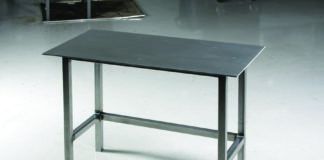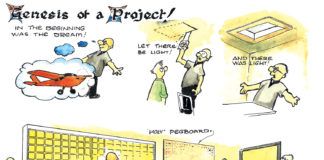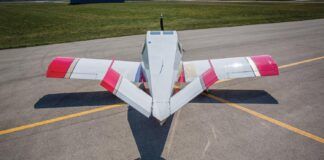Reaching back across nearly four decades, I can still remember every detail-the way the crisp air smelled, the quiet of the night sky before we got going. It was the night I first touched the controls of an airplane. I was 13 years old, and nothing I had ever done electrified me to the same level of excitement as I experienced in those few minutes in the dark Minnesota sky. N5799M. Even after all these years, and countless airplanes later, I can remember the N-number without looking it up. A Cessna 175 Skylark, geared engine and all. The panel was full IFR for the time, it even had a fancy DME with an analog needle that told you how far away it was from the VOR-pretty high-tech for its day. Our Aviation Explorer Post had finished the evening’s work on a J-3 re-cover project, and one of the advisors had asked if anyone wanted to go for a ride. I was in the right front seat before anyone else even raised their hands.

The author’s first plane.

The first plane you own never looks as bad to your eye as it does to others.
The nighttime world of the airport was wonderfully alien, all colored lights and dark spaces. I had studied and knew each step in the process of getting airborne, and being a part of it was beyond wonder. Several minutes after takeoff, the pilot asked if I wanted to fly, and it was the highlight of my life to that point. The Mississippi River wound its way below, a dark string among the lights of the communities I had never before seen from this perspective. We did some turns, a climb and descent, and then he said, "That’s enough. Take us back to the airport!" I knew where we were, and headed us home, the pilot letting me enter the pattern and then follow him through the controls as we slid down final and ended the perfect beginning of an aviation life.
A Lifetime of Firsts
First flights are like that. They can affect and change us in ways both profound and permanent. They stay with us forever, living in our memories well after the photographs have faded away. And the most wonderful thing is that we can experience them many times over in a lifetime of flying, because they are not single events. There is your first time in an airplane, your first flying lesson, your first solo. That first time you take up the most special person in your life. The first time you fly an airplane that has your name on the registration. And, yes, the first flight of an airplane that you built with your own two hands.
A first flight in a unique and exciting airplane burns itself into memory just as much as those initial experiences with weather, or the day that an examiner slaps you on the arm and says, "Nice job. Let’s go inside and do the paperwork for your new license." Pilots, homebuilders especially, tend to focus on the first flights of new machines as the most special of all events, but truth be told, there are many and varied excitements available to everyone who does something for the first time in aviation.

Not the author’s first Cub, but they are all alike in his memory-trustworthy and fun.
Who can’t recall the first time the instructor asked, "So, do you have your student license with you today? Why don’t you let me sign that, and then you go fly around the pattern a couple of times. I’ll watch from the ground." I handed over my license that day long ago and watched as my slightly built instructor climbed out of the J-3 Cub that I had helped rebuild from a basket case. "It’s going to perform a little better without me; just take off and bring it back after three landings." Oh, that marvelous feeling of freedom mixed with the anxiety of something new that carried a little risk. There I was, all alone on downwind, and it was up to me to bring the airplane back. My young friends would never have forgiven me if I’d bent the plane that we had all worked so hard on, and it is odd that while I can remember the feelings and details of most of that first solo, the actual landings tend to escape me. I remember taxiing back to my instructor, who was lying in the summer grass, waiting for my return. He was probably as excited as I was, and my quivering didn’t stop along with the engine. It lasted through the bicycle ride home, and then some. Marvelous experience, soloing an airplane. A remarkable first flight that all licensed pilots share.
The first time I set out by myself in my recently purchased, airworthy "rent-a-wreck" to cross the country-now that was memorable! I was 22 years old, and headed back to visit my family in Minnesota from my new job in Houston. It took five stops for weather and fuel…oh, and oil. I learned quickly that an old trainer needs oil, and lots of it, especially when the engine is near TBO. Come to think of it, that’s probably why I could afford the purchase price (of the airplane, not the oil). I remember discovering that real-world weather is different in the hills of southern Arkansas than it is in the flat rolling farmland of the northern plains. That low, sticky moisture reduced visibility to a few miles, and because neither my airplane nor I were equipped or rated for instrument flying, we followed the highway through those hills-legal, but not safe. Sleeping on the couch in a farmland FBO, I was thrilled to be experiencing my first long trip, learning all the time.
I relish the time that I first flew a blimp-a wonderfully funny flying machine that defied all I’d learned up to that point about piloting manned aircraft. Arranged by an acquaintance with high pull in low places, we drove the Goodyear blimp around the sky for a couple of hours, never really knowing if the wind or the engines were going to win. From gliders to simulators for some of the more unique flying machines you’ll ever find-every one was a first flight for me. It mattered not that someone else had flown those same aircraft many times before the experience came to me.
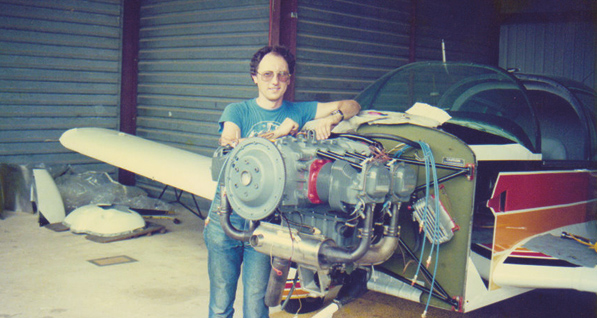
A little sweat equity truly makes an airplane your own.
A Special First
The joy in a first flight is different for different pilots. For some, it is conquest; for others, the novelty of the thing. For many, it is simply the thrill of doing something unusual. For a few lucky ones, it is doing something that no one else has done before. At the highest levels of test flying, where the air is thin, the speeds high and the dollar values astronomical, first flights are exceedingly rare. There are so few new designs, and so many pilots vying for the job, that only an infinitesimal number of individuals get the privilege of being the first to try a new type. Some of these "top of the pyramid" pilots envy those of us in homebuilt aviation because we have a greater chance of experiencing the thrill of being the first aloft with a new type than they do.
The morning of October 9, 2005 (coincidentally, the 30th anniversary of my own first solo), we rolled my recently inspected and licensed RV-8 out for its first flight. A few friends were present-my long-time IA who owned the hangar, an old flight test engineer who insisted on taking pictures and video, another pilot friend who had helped here and there with awkward rivets and wanted to be a part of it. Each had a wife or offspring that came along, so that was already a bigger crowd than I wanted. Focus, focus and focus-the three big rules for flight testing in my book. It’s hard for many to stay both focused on the job at hand, and at the same time remain polite with a crowd of people, even those wanting to help. But focus I did, and while this cloud of activity went on around me, I strapped in and prepared myself for a simple flight. Take off, get the feel for it and land safely-those were the major points on my kneeboard. Distractions came and went-a low battery (due to powering up the EFIS too early) required a recharge before the start. A loose com wire on my helmet required a repair. But eventually, I taxied to our temporary runway (a 30-foot wide taxiway being used while the main pavement was being replaced), took a deep breath and pushed the throttle forward. The RV responded like a scalded cat, and I knew instantly that this was the machine I had been waiting for all my life!

Nothing beats the grin you get after the first flight in an airplane that you built!
Checking the controls for sensitivity and making sure I stayed near the airport for at least a few laps, my toughest job was keeping the craft from climbing into the overlying Class B while running at full throttle, the power setting necessary because it was a new engine. For a minute or two, I felt like a boy who had a tiger by the tail, and was just trying to hang on for dear life. Eventually, we decided who was in command. I caught my breath, gave a few whoops and hollers, and headed for the practice area for a stall or two. It was at this time when I finally realized I was flying my airplane, the one that had lived in my dreams for so many decades. It was both a culmination and a fresh start, the end of a quest for everything I had wanted in an airplane and the sunrise of a new day of flying that would take me all over this great country of ours. It was pure freedom, and while a lot of testing lay ahead, I understood deep in my soul that I had found what I wanted, a magic carpet to open up the second half of my life.
First flights can be like that. They change us fundamentally, and at a level close to our core. They enliven and regenerate (sometimes with just a touch of fear) with an edge that makes us realize how alive we really are. I have a friend, an accomplished and decorated test pilot who was asked by a reporter if he was nervous before an important first flight. "Look," he said, "if you’re not at least a little bit nervous before something like this, then you probably don’t understand what it is that you are about to do." Nervousness, excitement, that tingle at the base of your spine-call it what you will. First flights, whether your first cross-country or the first flight of a new airplane, make us a little more alive each time. The beauty is that you don’t get just one. Sure, that Experimental airplane you have spent years building has only one first flight, and maybe you feel that you have to do it yourself. But the truth is, you will have your first flight with it, regardless of whether someone else has flown it first. That first moment in which you realize what you have in your hands is magic, and will stay forever in the soul of a true aviator.
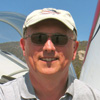
![]()
Paul Dye is an aeronautical engineer, commercial pilot and avid homebuilder with 30 years of leadership experience in aerospace operations and flight testing. He is also an EAA tech counselor and flight advisor who currently flies an RV-8, which he built, and is working on an RV-3.










